At first, the Wall was a mark, a simple line on the street. But this line was not only on the surface level, it divided also the underworld, the tunnels of the underground.
In the night of August 12 to 13, 1961, the Berlin Wall was erected. Following a resolution of the Ministerial Counsel of the German Democratic Republic concerning changes in the public transport network of Berlin, some underground lines were divided, others shortened. Two routes continued to function from start to finish. Within the territory of “Berlin, capital of the GDR”, however, West trains only stopped at Friedrichstraße; all other stations were closed.
For the inhabitants of Mitte, the Eastern historical center of town, the tunnel under their feet became a foreign land, prohibited, but not invisible. Despite the accesses being closed off or camouflaged as emergency exits and aeration shafts, one could still hear and feel the “run-through-trains”, as they were called.
In the underworld, the border crossing was invisible. The trains ran through from Wedding to Kreuzberg, without stopping. The “ghost-stations” with their dim lighting, had nothing to do with the city above. And the warning announcement “last station in the Western Sector” was ignored. What remained in the tunnel was the line. The strangeness of the voyage was empty of any consciousness for the crossing of a border or for travelling through No Man‘s Land.
The white line in the tunnel still exists. Today, it stands for passage and no longer for territorial limits. Close to the line, you will now see words, fugitive thoughts. They all start with the preposition “ueber” (over) and accompany us on our passage. They engender fictional images. They remind us of what we felt when the Wall was there. They describe the great change. They refer to the present and to the future.
The words are on gray-colored panels; mounted at eye-level on the dark tunnel wall, they reflect the light of the train. The old white line is freshly repainted.
On your first trip, you may only see a glow or catch a glimpse at a single word. Is that enough to awaken your curiosity…
(English translation by Helen Adkins)
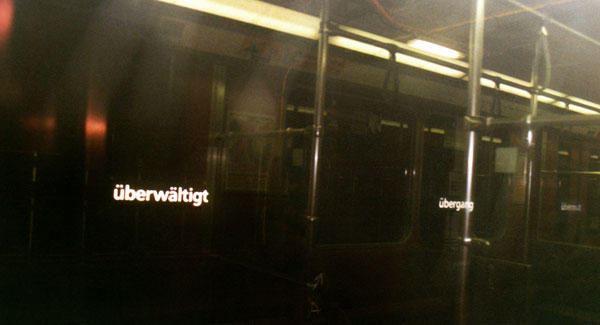
To give you an idea of the images engendered by the panels, I tried to transform these ambiguous german “ueber-terms” with over-, sur- or trans- into english. That’s not an easy undertaking since the german word “uebergang” for instance means (border-) crossing, passage or connection between two lines of public transport as well as transition or change, the term “ueberfluß” can be translated as “affluence” but also as “over the river” and “ueberirdisch” is “on the surface” or “celestial”…
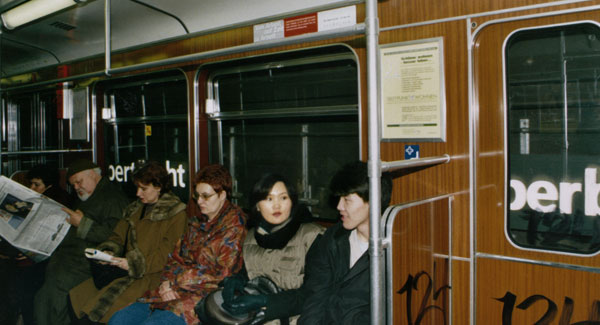

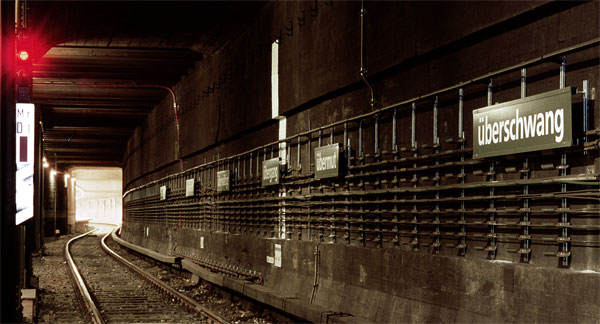

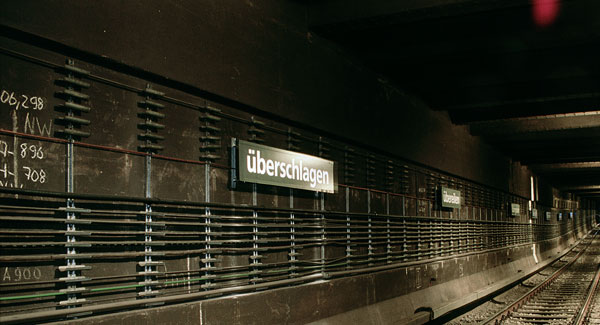

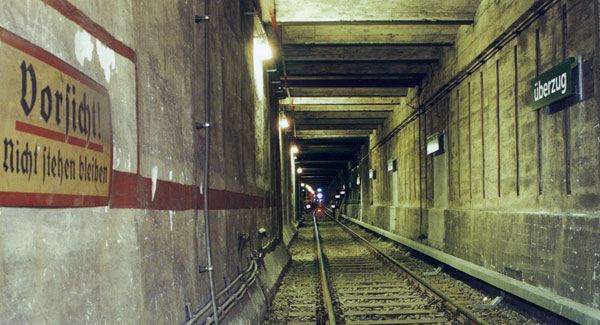

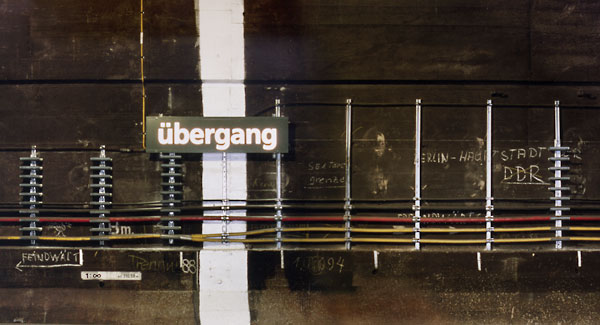
Some old chalk-scribblings of GDR border guards have survived at the tunnel wall: They mark the directions “foewise” (feindwaerts) and “friendwise” (freundwaerts) on the tunnel wall, same as “Sektorengrenze” (sector boundary) and “Berlin – Hauptstadt der DDR” (Berlin – capital of the GDR).









































































